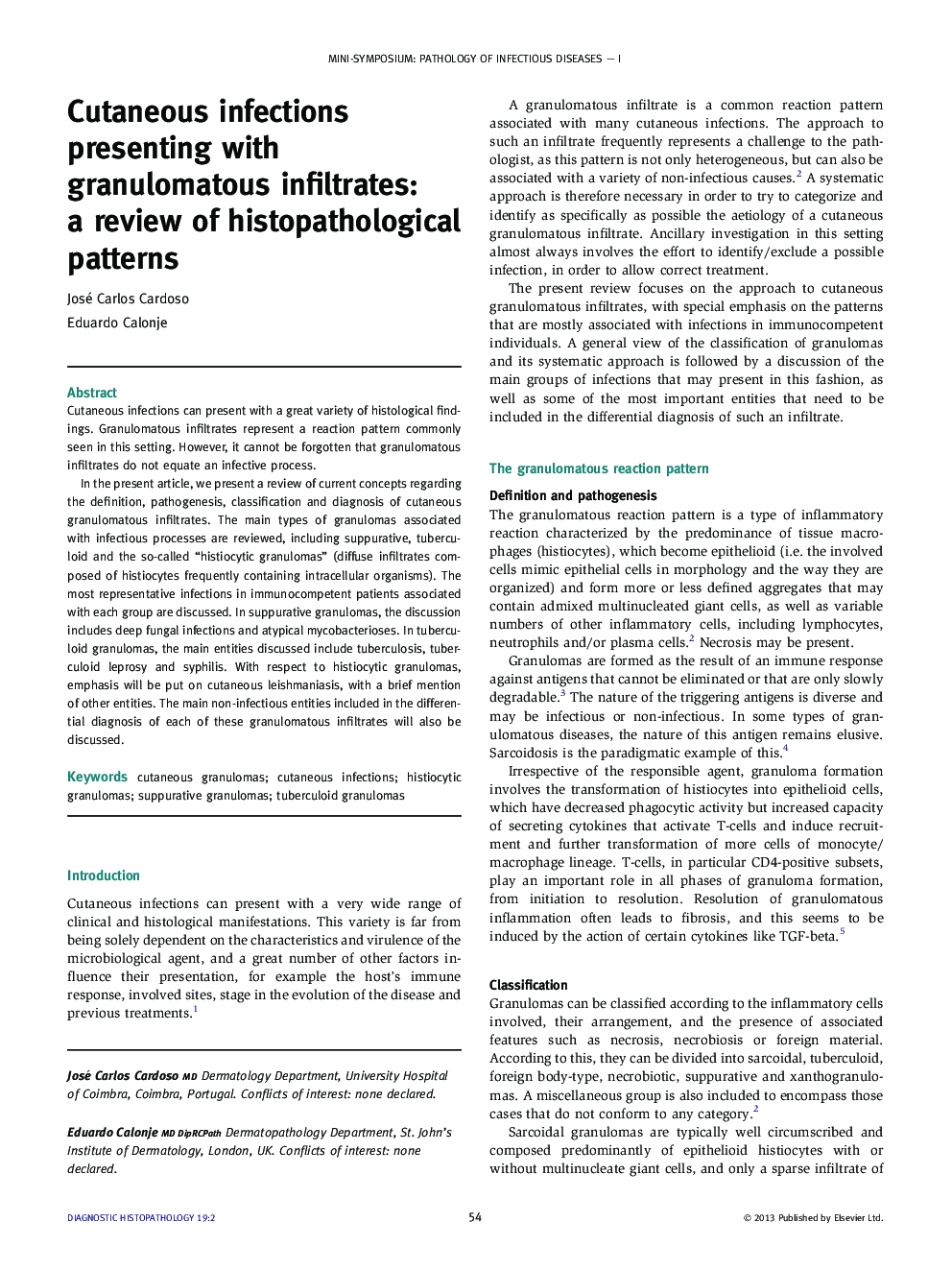| Article ID | Journal | Published Year | Pages | File Type |
|---|---|---|---|---|
| 4131161 | Diagnostic Histopathology | 2013 | 8 Pages |
Cutaneous infections can present with a great variety of histological findings. Granulomatous infiltrates represent a reaction pattern commonly seen in this setting. However, it cannot be forgotten that granulomatous infiltrates do not equate an infective process.In the present article, we present a review of current concepts regarding the definition, pathogenesis, classification and diagnosis of cutaneous granulomatous infiltrates. The main types of granulomas associated with infectious processes are reviewed, including suppurative, tuberculoid and the so-called “histiocytic granulomas” (diffuse infiltrates composed of histiocytes frequently containing intracellular organisms). The most representative infections in immunocompetent patients associated with each group are discussed. In suppurative granulomas, the discussion includes deep fungal infections and atypical mycobacterioses. In tuberculoid granulomas, the main entities discussed include tuberculosis, tuberculoid leprosy and syphilis. With respect to histiocytic granulomas, emphasis will be put on cutaneous leishmaniasis, with a brief mention of other entities. The main non-infectious entities included in the differential diagnosis of each of these granulomatous infiltrates will also be discussed.
